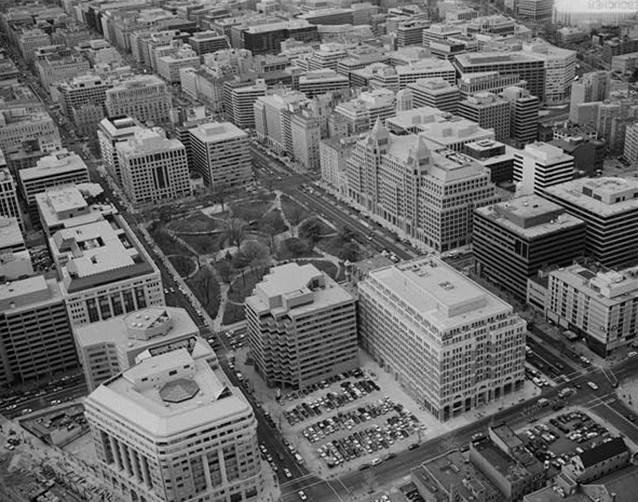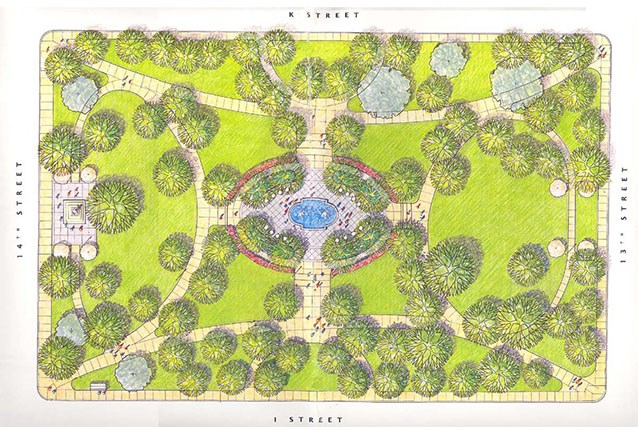Last updated: October 12, 2021
Article
Franklin Park Cultural Landscape

HABS, Library of Congress
The focal point of Franklin Park is the elliptical, flagstone-paved plaza with an elliptical fountain surrounded with simply molded sandstone coping in its center. Four curvilinear planting areas are evenly spaced within the plaza around the fountain. Flights of three broad stairs lead to the plaza on the north, east, and south sides. On the west, the plaza is entered at grade. A statue commemorating the Revolutionary War hero, Naval Commodore John Barry, occupies a site at the mid-point of the park’s west side. The bronze sculpture stands on a marble pedestal ornamented with a female allegorical winged victory figure. The park’s east end is the former site of the lodge; this structure has been removed, along with sections of the 1936 cast-iron fence.

Downtown BID Franklin Park Plan 2005
Though simpler, the planting plan implemented in 1936 included some features that have since been eliminated, such as hedges surrounding the plaza and along some walks leading to it. Dense beds of azaleas were once planted against the outer sides of the hedges around the plaza. The current planting plan retains most features of the 1936 plan. Certain specimen trees, as well as the general tree layout, were retained from the Victorian park. The 1936 rehabilitation eliminated the more ornamental features, such as the eighteen flower beds, concentrating on the large trees growing in small clusters, lines, or as individual specimens, and open expanses of lawn.
Quick Facts
- Cultural Landscape Type: Designed
- National Register Significance Level: National
- National Register Significance Criteria: C
- Periods of Significance: 1791; 1867-1936
